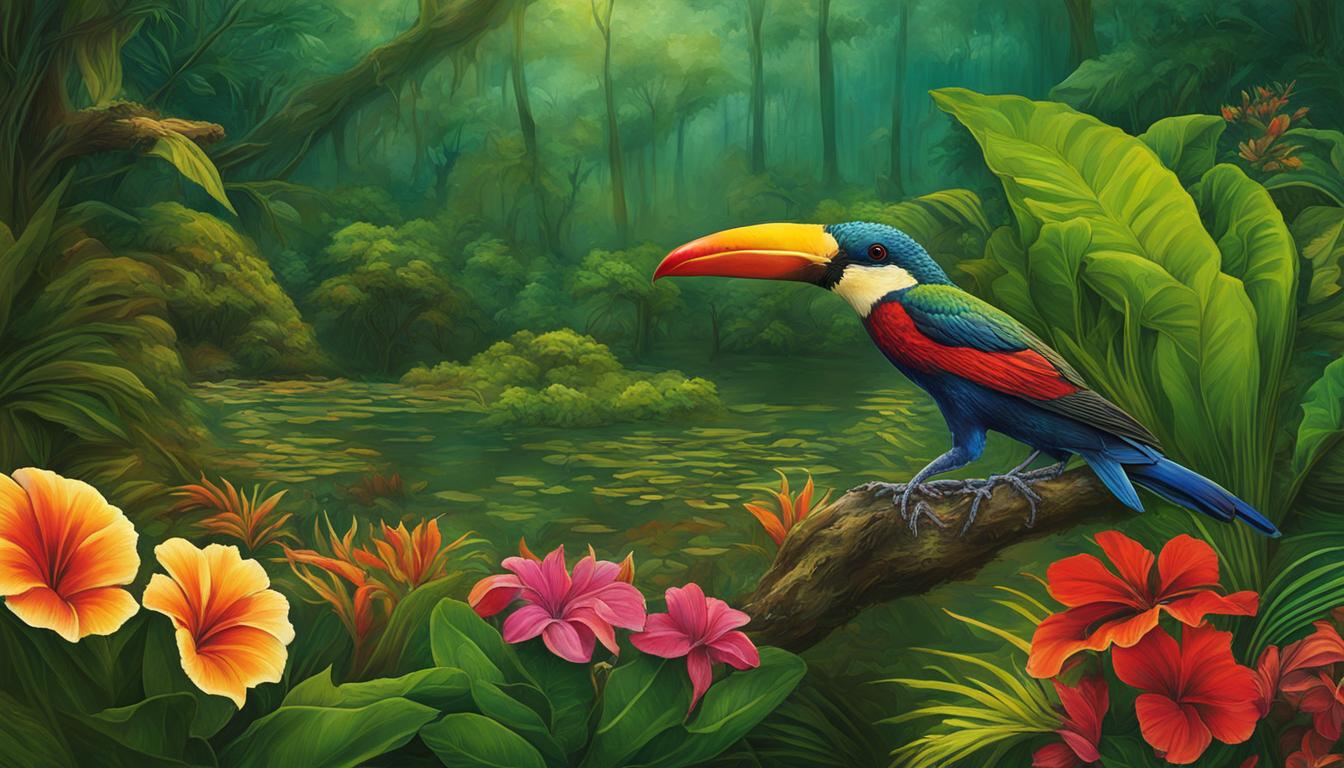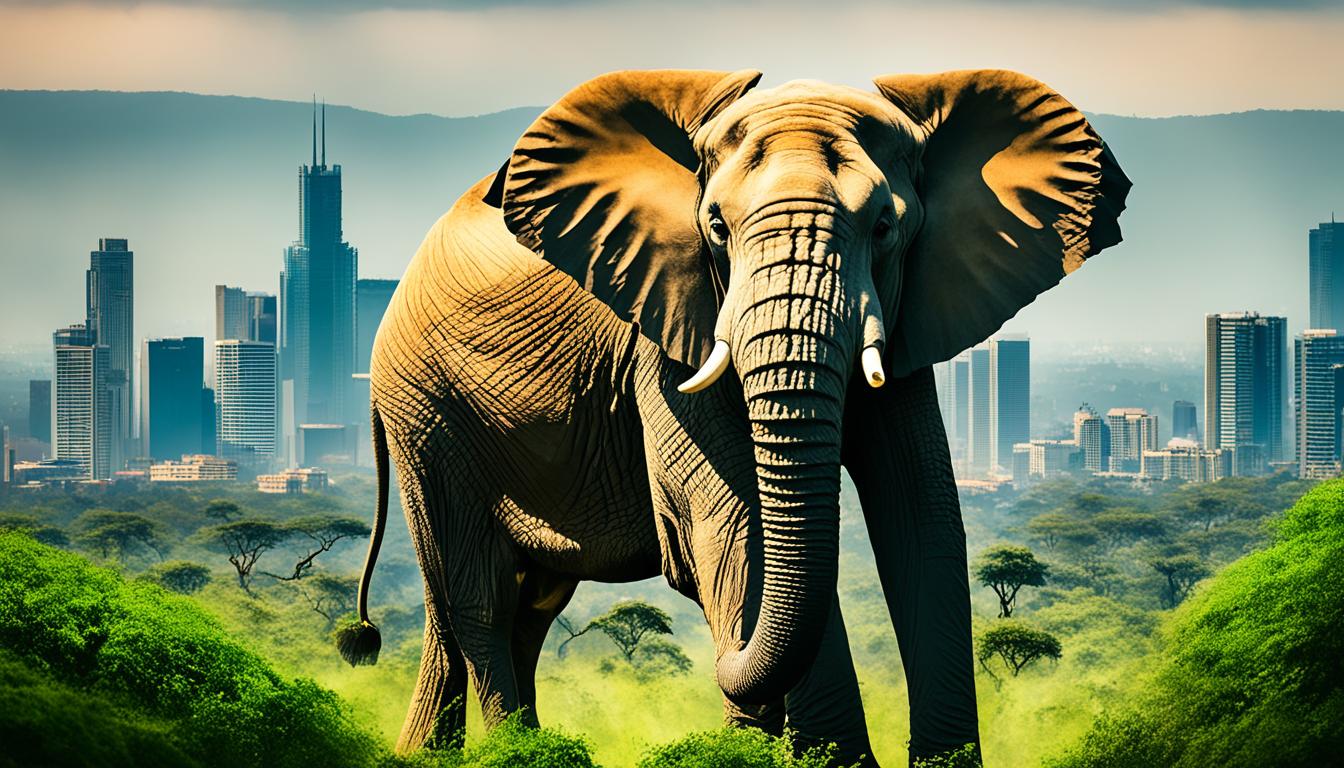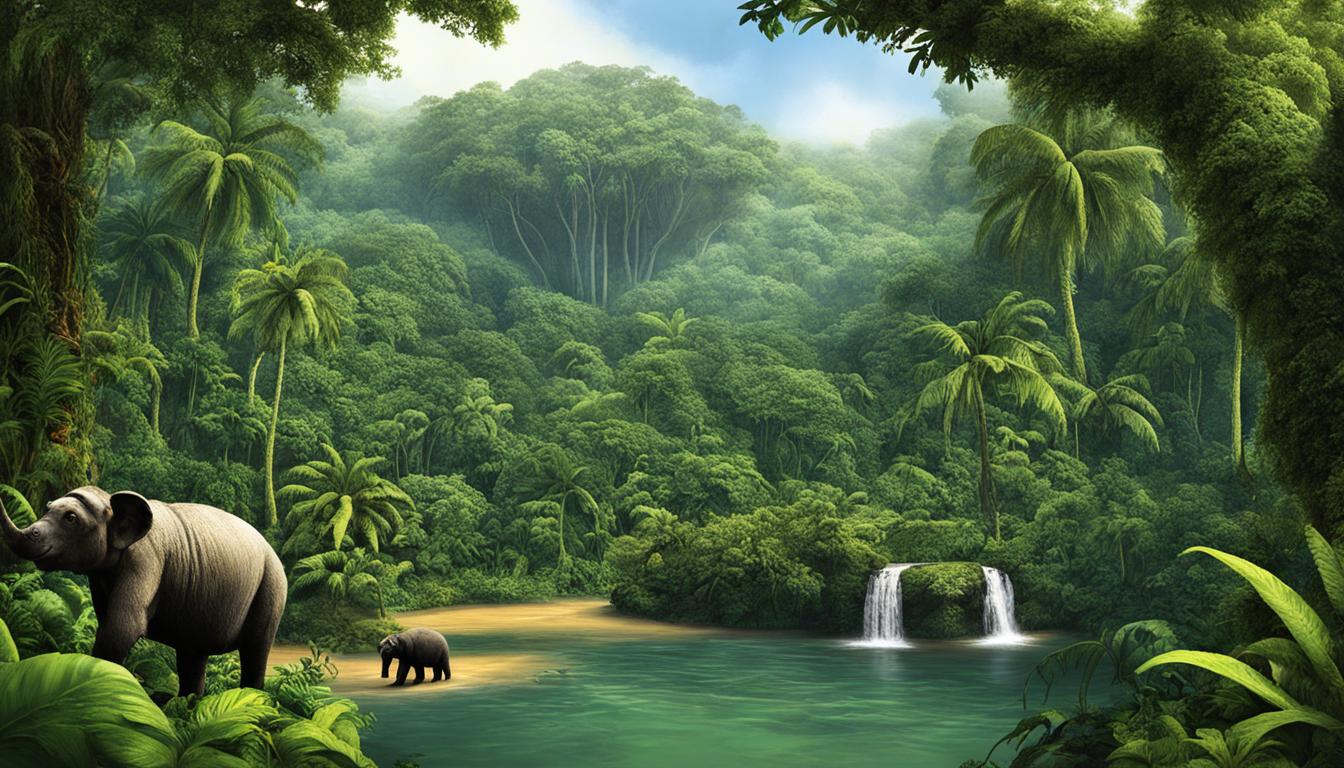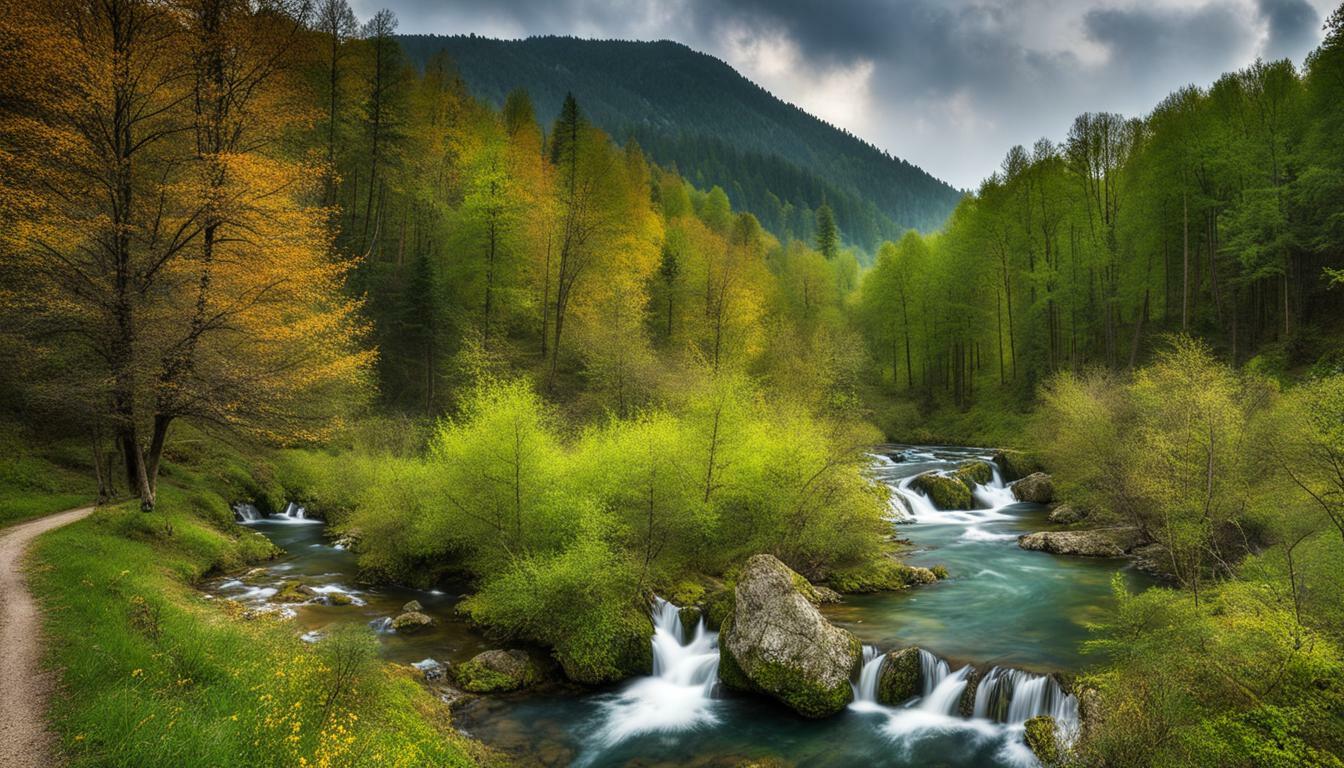Papua New Guinea Biodiversity: Animal and Plant Species and What Is Under Threat
Papua New Guinea, with its diverse landscapes and ecosystems, is home to a rich biodiversity of animal and plant species. However, this unique biodiversity is under threat due to various factors such as habitat destruction, overexploitation, and climate change. In this article, we will explore the incredible biodiversity of Papua New Guinea and the urgent need for conservation efforts to protect these species and their habitats.
Key Takeaways
- Papua New Guinea has a diverse range of animal and plant species, making it one of the world’s hotspots for biodiversity.
- The country’s rich natural resources and ecosystems are under threat due to habitat destruction, overexploitation, and climate change.
- Conservation efforts are essential to protect Papua New Guinea’s unique biodiversity and ensure sustainable development for future generations.
- The Conservation Environment Protection Authority (CEPA) plays a crucial role in biodiversity conservation and has established key policies and frameworks for management.
- Challenges such as limited funding, coordination, and capacity constraints need to be addressed to strengthen biodiversity conservation in Papua New Guinea.
Key Policies and Governance Approach for Biodiversity Conservation
In Papua New Guinea, the Conservation Environment Protection Authority (CEPA) plays a crucial role in safeguarding the country’s biodiversity. To ensure effective management and conservation, Papua New Guinea has established key policies and frameworks such as the Environment Act 2000, the CEPA Act 2014, and the PNG Protected Areas Policy (2014). These policies serve as a foundation for the protection of biodiversity and natural resources management.
The PNG Protected Areas Policy focuses on five key pillars:
- Governance and Management
- Sustainable Livelihoods for Communities
- Effective Biodiversity Management
- Managing the Protected Area Network
- Sustainable Financing for Protected Areas
Papua New Guinea has set up 59 protected areas across the country, highlighting its commitment to biodiversity conservation. Ongoing projects like the Coral Triangle Initiative and the Access Benefit Sharing of Utilization of Genetic Resources further contribute to biodiversity protection.
In addition, Papua New Guinea is actively working on the development of a Protected Area Bill and a Protected Areas Investment Plan, which will further strengthen its governance approach towards biodiversity conservation.
Biodiversity Conservation Policies and Acts in Papua New Guinea
| Policy/Act | Year Established |
|---|---|
| Environment Act | 2000 |
| CEPA Act | 2014 |
| PNG Protected Areas Policy | 2014 |
Successes and Remaining Challenges in Biodiversity Conservation
While Papua New Guinea has achieved some successes in biodiversity conservation, there are still significant challenges that need to be addressed. The implementation of the National Biodiversity Strategy and Action Plan (NBSAP) has encountered difficulties due to a lack of interagency coordination, limited funding, and capacity constraints.
Interagency coordination is crucial for effective biodiversity conservation. Currently, there is a lack of collaboration and communication among government agencies, hindering the implementation of comprehensive conservation strategies. To overcome this challenge, increased efforts and resources must be dedicated to fostering interagency coordination and collaboration.
Another significant challenge is the limited funding available for biodiversity conservation efforts. Insufficient financial support has hindered the implementation of essential activities such as species monitoring, habitat protection, and community engagement. Establishing sustainable funding mechanisms, both domestically and through international partnerships, is vital to ensure the long-term success of conservation initiatives in Papua New Guinea.
The management of protected areas is an area that requires significant attention. Many protected areas in the country have experienced little to no progress in terms of effectiveness and management. Without proper management, these areas are at risk of degradation and biodiversity loss. To improve protected area management, a dedicated management agency or organization needs to be established, equipped with adequate resources and infrastructure.
Addressing these challenges and strengthening biodiversity conservation in Papua New Guinea requires a multi-faceted approach. Greater interagency coordination is needed to ensure the efficient implementation of the NBSAP and other conservation initiatives. Furthermore, increased funding support is necessary to enable the effective management of protected areas and the implementation of sustainable conservation practices.

Initiatives and Development Plans for Biodiversity Conservation
Several initiatives and development plans are currently in progress to enhance biodiversity conservation in Papua New Guinea. These efforts aim to address the threats faced by the country’s unique ecosystems and species. The United States Agency for International Development (USAID) is playing a key role in this endeavor, providing funding and support for various initiatives.
USAID:
USAID is actively working to reduce threats to biodiversity in Papua New Guinea. Through grants awarded to organizations such as the Centre for Environmental Law and Community Rights Inc. (CELCOR) and Outspan PNG Ltd., USAID is helping to promote women’s economic empowerment and strengthen traditional landowners’ rights. These initiatives are essential for ensuring sustainable development and conservation in the country.

In addition to the support provided by USAID, the United Nations Development Programme (UNDP) is collaborating with the Conservation Environment Protection Authority (CEPA) on a Global Environment Facility (GEF) project. This project aims to develop a sustainable finance mechanism for the protected area network in Papua New Guinea. As part of this initiative, a Biodiversity Trust Fund is being established to secure long-term financing for biodiversity conservation.
Furthermore, one notable project is the USAID Lukautim Graun project. This five-year, $22 million initiative focuses on reducing threats to biodiversity, particularly in customary lands and exceptional biodiversity areas. The Lukautim Graun project plays a crucial role in raising awareness, building capacity, and implementing sustainable practices to safeguard Papua New Guinea’s natural heritage for future generations.
Papua New Guinea’s Rich Biodiversity and Ecological Features
Papua New Guinea is renowned for its rich biodiversity, supported by a diverse range of ecosystems and species. The country proudly possesses the third largest expanse of tropical rainforest globally, covering a massive 28.2 million hectares, which accounts for 80% of the forest estate. This lush tropical rainforest provides a habitat for countless plant and animal species, fostering an intricate web of life.
Not only does Papua New Guinea boast impressive rainforests, but its mainland coastline also showcases a variety of unique ecological features. These include expansive mangrove swamps, picturesque lagoons, fertile wetlands, vibrant coral reefs, and breathtaking atolls. These coastal habitats offer crucial sanctuaries for a multitude of marine species, contributing to the extraordinary biodiversity of the country’s waters.
In fact, Papua New Guinea’s waters are situated within the famed Coral Triangle, where the highest known level of marine biological diversity on the planet can be found. With an estimated 2,800 species of fishes alone, the Coral Triangle exhibits an unparalleled display of marine life, attracting divers and scientists from around the world.
The country’s mangrove ecosystems also deserve special recognition. Papua New Guinea is home to extensive mangrove swamps that span an area of 51.6 million hectares, exhibiting the highest mangrove diversity worldwide. These unique habitats not only provide numerous ecological benefits but also support a wide range of plant and animal species, acting as important breeding grounds for fish and protecting coastal areas from erosion.
Lastly, Papua New Guinea’s freshwater systems play a vital role in sustaining the country’s rich biodiversity. Untouched by pollution, these tropical freshwater systems are teeming with diverse aquatic life, including fish, amphibians, and various invertebrates. These pristine freshwater ecosystems are of immense importance, contributing to the overall ecological balance and providing critical resources for both wildlife and human communities.

Papua New Guinea’s Ecological Features
| Ecosystem | Area | Key Characteristics |
|---|---|---|
| Tropical Rainforest | 28.2 million hectares | 80% of the forest estate, habitat for countless species |
| Mangrove Swamps | 51.6 million hectares | Highest mangrove diversity globally, breeding grounds for fish |
| Coastal Areas | Varying | Mangrove swamps, lagoons, wetlands, coral reefs, and atolls |
| Freshwater Systems | Varying | Unpolluted tropical freshwater systems supporting diverse aquatic life |
With such remarkable biodiversity and ecological features, Papua New Guinea stands as a global treasure, deserving of conservation efforts to preserve its natural heritage for future generations.
Threats to Papua New Guinea’s Biodiversity
Despite its rich biodiversity, Papua New Guinea’s unique species and ecosystems are facing numerous threats. Habitat destruction, primarily due to logging and clearing for agriculture, have resulted in the loss and degradation of forests and other habitats. The overexploitation of natural resources, including wildlife and timber, has also contributed to the decline of certain species and ecosystems. Climate change poses additional challenges, with rising temperatures, changing rainfall patterns, and other effects impacting biodiversity. Industrial activities linked to mining, oil and gas, forestry, agriculture, and the production of commodities like timber and palm oil further exacerbate these threats.

These anthropogenic activities are causing significant harm to Papua New Guinea’s biodiversity. Habitat destruction, such as deforestation and land conversion for agriculture, is destroying crucial ecosystems and displacing native species. Logging is a major contributor to habitat destruction, as large tracts of forest are cleared for timber extraction.
Overexploitation of natural resources has also had a detrimental impact on biodiversity in Papua New Guinea. The unsustainable hunting of wildlife for bushmeat and the illegal trade in endangered species has led to population declines and even extinctions. Similarly, logging activities that target high-value timber species without adequate sustainable management practices have resulted in the loss of important forest habitats.
Climate change is another significant threat to Papua New Guinea’s biodiversity. Rising temperatures and changing rainfall patterns are disrupting ecosystems and altering the distribution and behavior of species. Coral reefs are particularly vulnerable to the effects of climate change, with rising sea temperatures leading to coral bleaching and the degradation of these diverse and important marine habitats.
Industrial activities, including mining, oil and gas extraction, and the production of commodities such as timber and palm oil, further contribute to the degradation of Papua New Guinea’s biodiversity. These industries often operate with inadequate environmental regulations and practices, leading to habitat destruction, pollution, and the loss of ecosystem services.
It is crucial to address these threats and implement sustainable practices to protect Papua New Guinea’s unique and fragile biodiversity. Conservation efforts, including the establishment of protected areas, the enforcement of sustainable resource management practices, and the promotion of alternative livelihood options for local communities, are essential to safeguarding the country’s natural heritage for future generations.
Agarwood and Overexploitation in Papua New Guinea
Agarwood, produced by infected Aquilaria trees, is a highly valuable fragrant heartwood that is facing overexploitation in Papua New Guinea. The demand for agarwood far exceeds the available supply, resulting in the rapid decline of certain Aquilaria species. This precious resource possesses cultural, medicinal, and aromatic uses, making it highly sought after in the fragrance trade.
Unfortunately, unsustainable harvesting practices and illegal trade have put Aquilaria trees at risk. The lack of proper monitoring and resource management further exacerbates the problem, as target trees are often cut without checking for the presence of agarwood. These detrimental practices are driving the Aquilaria species towards the brink of extinction.

Efforts must be made to address the threats to Aquilaria species and protect these valuable trees from overexploitation. It is vital to implement sustainable harvesting practices and enforce strict regulations on the fragrance trade to ensure the survival of these species. Additionally, proper monitoring and resource management are essential for identifying infected Aquilaria trees and preventing the indiscriminate cutting of healthy trees.
Conservation organizations, government bodies, and local communities should work together to raise awareness about the importance of agarwood conservation and the preservation of Aquilaria species. By taking immediate action to protect these precious trees, Papua New Guinea can safeguard its natural heritage and contribute to global efforts in biodiversity preservation.
Trade Routes and Conservation Efforts for Agarwood
Agarwood, a prized commodity, is harvested in Papua New Guinea and transported to international markets through various trade routes. These routes often involve the use of footpaths and small boats to reach the desired destinations. One common destination for large shipments of agarwood sourced from Papua New Guinea is Singapore.
To address the overexploitation of agarwood and protect the species and their habitats, conservation efforts are being implemented. These initiatives aim to promote sustainable practices in agarwood harvesting and ensure that it is conducted in a responsible and regulated manner.
One aspect of these conservation efforts is the monitoring of agarwood trade. Through careful monitoring, authorities can identify any unlawful practices or unsustainable harvesting methods. By monitoring the trade, it becomes possible to enact regulations to safeguard the agarwood trees and promote sustainable practices.
The overall goal of these conservation efforts is to achieve a balance between the economic value of agarwood and the need to protect its source: the Aquilaria trees. Through sustainable practices and monitoring, it is hoped that the agarwood industry can thrive without causing harm to the environment.
Slow Implementation and Revision of the National Biodiversity Strategy
The implementation of Papua New Guinea’s National Biodiversity Strategy and Action Plan (NBSAP) has encountered various challenges, including slow progress, limited funding and capacity, and a lack of coordination. These hurdles have hampered the effective preservation of the country’s biodiversity. To address these issues, efforts are underway to revise the NBSAP, align it with the Aichi Biodiversity Targets, and set national targets for biodiversity conservation. The revised plan aims to overcome the gaps and challenges experienced in previous implementation, promoting greater coordination among stakeholders, capacity-building, and the preservation of biodiversity.

Support Mechanisms for Biodiversity Implementation
In order to enhance the implementation of biodiversity conservation in Papua New Guinea, various support mechanisms are in place. These mechanisms include legislation, funding, capacity-building, coordination, and the involvement of customary landowners.
Legislation: Legislation plays a crucial role in providing a legal framework for biodiversity management. The Environment Act and the Conservation Environment Protection Authority (CEPA) Act are key legislative instruments in Papua New Guinea that support biodiversity conservation. These acts outline the responsibilities and powers of government agencies and stakeholders involved in the protection and management of biodiversity.
Funding: Funding support is essential for implementing effective conservation actions. Efforts are being made to secure both government and external funding to support biodiversity initiatives in Papua New Guinea. Adequate funding enables the implementation of conservation projects, capacity-building activities, and the development of sustainable financing mechanisms for biodiversity management.
Capacity-building: Capacity-building initiatives aim to strengthen the skills and knowledge of personnel engaged in biodiversity projects. Training programs and workshops are conducted to enhance the capabilities of individuals involved in biodiversity conservation. Improved capacity ensures effective planning, implementation, and monitoring of conservation efforts.
Coordination: Effective coordination among government agencies, non-governmental organizations, and local communities is vital for successful biodiversity conservation. Coordination ensures that efforts are streamlined, resources are optimally utilized, and collaborations are fostered. Regular communication and collaboration among stakeholders facilitate the exchange of knowledge, experiences, and best practices in biodiversity management.
Customary Landowners: Considering the significant role of customary landowners in Papua New Guinea, their involvement and equal consideration in decision-making processes and conservation efforts are crucial for sustainable biodiversity management. Customary landowners often have traditional knowledge and practices that contribute to the protection and preservation of biodiversity. Engaging them in conservation initiatives ensures their active participation and helps establish effective management of customary lands.
To summarize, the support mechanisms of legislation, funding, capacity-building, coordination, and the involvement of customary landowners are essential in enhancing the implementation of biodiversity conservation in Papua New Guinea. These mechanisms provide the necessary legal, financial, and technical support for effective biodiversity management and contribute to the long-term preservation of Papua New Guinea’s unique natural heritage.

Conclusion
Papua New Guinea’s rich biodiversity is a precious natural asset that is in urgent need of conservation and protection. The country has taken significant steps by implementing policies, establishing protected areas, and developing plans to safeguard its unique ecosystems and species. However, challenges such as limited funding and coordination still persist.
To ensure the long-term survival of Papua New Guinea’s diverse natural heritage, sustainable development measures must be prioritized. This includes increased government support, both in terms of funding and capacity-building, as well as fostering international collaborations. By working together, we can create a sustainable future that balances economic development with the protection of Papua New Guinea’s invaluable biodiversity.
Efforts to protect and conserve the rich species found in Papua New Guinea hold significant benefits for both the environment and the local communities. Biodiversity conservation promotes sustainable development by preserving the natural resources that support livelihoods, such as fisheries, agriculture, and ecotourism. It also helps to safeguard important ecosystem services, such as water purification and climate regulation.
In conclusion, the conservation of Papua New Guinea’s biodiversity is crucial for the well-being of the planet and its future generations. With concerted efforts and a commitment to sustainable development, we can ensure the protection of this unique natural treasure and the many species that call it home.
FAQ
What is the biodiversity like in Papua New Guinea?
Papua New Guinea is home to a rich biodiversity of animal and plant species, thanks to its diverse landscapes and ecosystems.
What are the threats to Papua New Guinea’s biodiversity?
The unique biodiversity in Papua New Guinea is under threat from habitat destruction, overexploitation, and climate change, as well as industrial activities such as logging and mining.
How is biodiversity conserved in Papua New Guinea?
The Conservation Environment Protection Authority (CEPA) is responsible for the protection and conservation of biodiversity in Papua New Guinea. The country has established key policies and frameworks, including the Environment Act 2000 and the PNG Protected Areas Policy, to manage and conserve biodiversity.
What challenges are faced in biodiversity conservation in Papua New Guinea?
Challenges include a lack of coordination among government agencies, limited funding, and capacity constraints. There is also a need for a dedicated protected area management agency and infrastructure for effective management.
What initiatives are there for enhancing biodiversity conservation in Papua New Guinea?
Initiatives include the USAID Lukautim Graun project, which focuses on reducing threats to biodiversity, as well as partnerships with organizations like the Centre for Environmental Law and Community Rights Inc. and Outspan PNG Ltd. The UNDP is also collaborating with CEPA on a Global Environment Facility project.
What are the ecological features of Papua New Guinea?
Papua New Guinea boasts extraordinary biodiversity, including the third largest expanse of tropical rainforest in the world, extensive mangrove swamps, and diverse marine ecosystems in the Coral Triangle.
What is the impact of overexploitation on agarwood in Papua New Guinea?
Agarwood, a valuable fragrant heartwood, is facing overexploitation due to high demand. Unsustainable harvesting practices and illegal trade have put Aquilaria trees, which produce agarwood, at risk.
How is the trade of agarwood monitored in Papua New Guinea?
Conservation efforts aim to promote sustainable practices and monitor the trade of agarwood. This includes ensuring responsible and regulated harvesting, protecting the species and their habitats.
Why has the implementation of the National Biodiversity Strategy faced challenges?
Challenges include slow progress, limited coordination, and funding and capacity constraints. Efforts are being made to revise the plan, align it with international targets, and promote greater coordination.
What support mechanisms are in place for biodiversity conservation in Papua New Guinea?
Legislation such as the Environment Act and the CEPA Act provide a legal framework. Funding support, capacity-building initiatives, and interagency coordination are crucial for effective conservation. The involvement of customary landowners is also considered essential.
How can Papua New Guinea safeguard its rich biodiversity?
By prioritizing biodiversity conservation, implementing sustainable development measures, and securing funding and international collaborations, Papua New Guinea can protect its diverse ecosystems and species for future generations.







